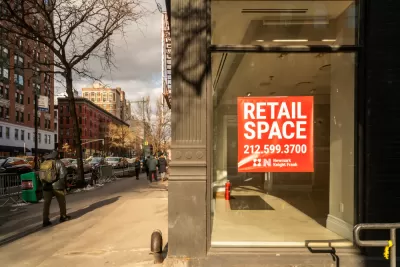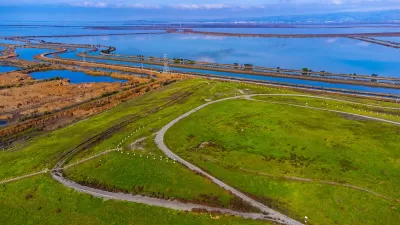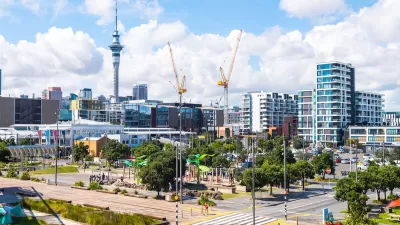With demand for housing growing and for physical storefronts waning, do the restrictions imposed by ground-floor retail zoning still make sense?

Zoning requiring ground-floor retail began as a way to activate street-level spaces and prevent sidewalks from becoming drab corridors marked by low-traffic uses. But as the demand for physical retail diminishes, David Morley, writing in the American Planning Association blog, comments that cities will need to adjust retail zoning to reflect that changing demand.
Citing Tom Smith’s article "Activating Ground Floors in Mixed-Use Buildings After COVID," Morley writes, “In Smith's view, there are only two logical responses: expanding permissible uses and downsizing retail-only corridors and districts.” Smith argues that cities could expand permitted uses by allowing offices and small-scale, clean industrial uses that could replace traditional retail.
Smith also tackles housing. “Perhaps the only universal feature of active ground-floor use requirements is that street-fronting ground-floor residences are prohibited.” Yet with the housing crisis raging out of control, would permitting housing in some ground-floor spaces be such a bad thing? “As Smith points out, the alternative is likely a permanent abundance of vacant storefronts, which does nothing to support the businesses that remain.”
Around the country, cities and developers are rethinking the role of commercial real estate like retail and office space. Buildings that once housed massive malls, often conveniently located near major transportation corridors, are now being converted to housing and mixed-use developments.
FULL STORY: How Should We Zone for Post-Retail Streets?

Trump Administration Could Effectively End Housing Voucher Program
Federal officials are eyeing major cuts to the Section 8 program that helps millions of low-income households pay rent.

Planetizen Federal Action Tracker
A weekly monitor of how Trump’s orders and actions are impacting planners and planning in America.

Ken Jennings Launches Transit Web Series
The Jeopardy champ wants you to ride public transit.

How South LA Green Spaces Power Community Health and Hope
Green spaces like South L.A. Wetlands Park are helping South Los Angeles residents promote healthy lifestyles, build community, and advocate for improvements that reflect local needs in historically underserved neighborhoods.

Sacramento Plans ‘Quick-Build’ Road Safety Projects
The city wants to accelerate small-scale safety improvements that use low-cost equipment to make an impact at dangerous intersections.

How Project Connect Would Change ‘The Drag’
A popular — and sometimes deadly — Austin road will exchange car lanes for light rail.
Urban Design for Planners 1: Software Tools
This six-course series explores essential urban design concepts using open source software and equips planners with the tools they need to participate fully in the urban design process.
Planning for Universal Design
Learn the tools for implementing Universal Design in planning regulations.
Ada County Highway District
Clanton & Associates, Inc.
Institute for Housing and Urban Development Studies (IHS)
City of Grandview
Harvard GSD Executive Education
Toledo-Lucas County Plan Commissions
Salt Lake City
NYU Wagner Graduate School of Public Service





























